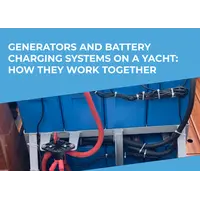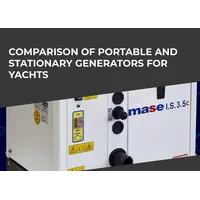topRik experts talk about one of the most reliable power sources for a yacht - an autonomous generator. Of course, you should have an alternator (engine generator), but it will not be able to provide energy to all the equipment, since it charges the batteries only when the engine speed exceeds one and a half thousand per minute. Even with “green energy” installations, you will not be able to provide power, for example, to operate an air conditioner.
The only option for solving problems with the power supply of a yacht is an autonomous alternating current generator of the required power. This time, topRik team discusses differences the differences between the two main types of marine generators for yachts, the advantages and disadvantages of each, based on our own experience of using them. Considering all that, we selected for you marine generators from the world's best manufacturers of marine electrical equipment.
Almost all yachts use a direct current system, since only direct current is suitable for starting a marine engine. Most modern yachts are additionally equipped with an AC system, which can be powered either by a cable supplied from shore or by an on-board generator. The AC system provides higher voltage and allows the use of household appliances.
On a modern yacht, the power source can be a stand-alone generator along with shore power, your engine generator (alternator), solar panels, a wind generator, etc. Moreover, depending on the size of the yacht and your ideas about the organization of the electrical system on board, you can use them all in different situations of autonomous coastal or long-distance navigation.
As for the choice of an autonomous generator set, there are two options for sailing and motor yachts - a gasoline or diesel generator. Gas is rarely used as fuel in marine generator models due to high requirements for the safety of the device and, as a consequence, its high cost.
The physical principles of converting mechanical energy into electrical energy are the same in both types of installations - diesel and gasoline. The field winding or permanent magnets create a primary magnetic field in the generator housing. The motor causes the rotor to rotate, the magnetic flux passing through the armature windings changes, and an alternating voltage appears in them.
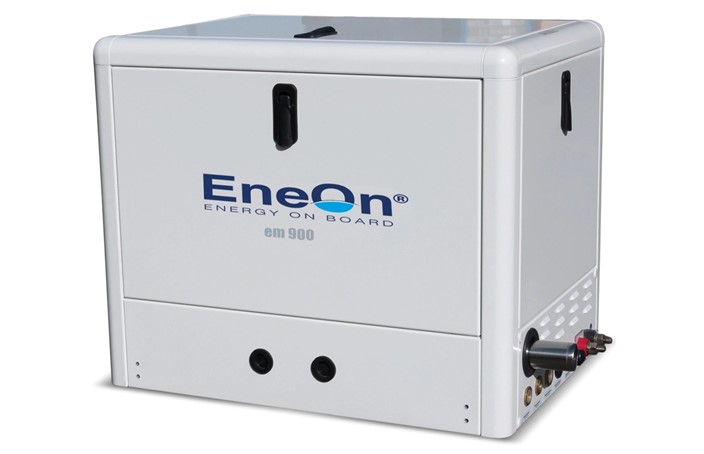
Generators with an excitation winding located on the rotor are similar to automobile ones. But unlike automobile ones, they retain a weak magnetic field after stopping the engine and turning off the excitation current. When restarted, the residual magnetization of the rotor causes a small voltage at the generator output, which creates a current in the field winding and brings the generator to full power. In operating mode, the current for the field winding is taken from one of the stator windings, then straightened and directed into the rotor through brushes and adjacent rings.
The primary magnetic field can also be created using an exciter located on the generator stator. In this case, in addition to the exciter winding, the main winding and a battery charging circuit independent of the AC output are located on the stator.
Marine installations with brushless generators are the most common today. However, due to the fact that the rotor current is regulated not directly, but through the exciter, brushless generators withstand starting currents less well and do not maintain the output voltage and frequency as accurately. The main advantage of brushless generators is reliability and ease of maintenance.
In order for all installed equipment to work normally, the voltage in the on-board electrical network should not differ in any way from the voltage in a city apartment - their frequency and amplitude must be the same.
The voltage frequency depends on the rotation speed of the generator rotor and the number of magnetic field poles. Since at a frequency of 50 Hz, the polarity of the output voltage changes from positive to negative 50 times per second, or 3000 times per minute, the rotor of the generator with two magnetic poles must make 3000 rpm. If there are two pairs of poles on the rotor, the rotation speed is reduced to 1500 rpm. In both cases, in order to maintain a constant voltage frequency, the shaft of the motor driving the generator must rotate at a fixed speed, regardless of the load in the electrical network.
To reduce noise, vibration or increase the efficiency of the generator set, manufacturers sometimes install a gearbox or belt drive after the engine and change the number of shaft revolutions. But it is possible to make the voltage frequency completely independent of the rotor speed only with the help of power electronics.
As a result, two fundamentally different types of generator sets are produced for boats and yachts - with constant and variable engine shaft rotation speeds. Models with constant speed are more common. Generators are more expensive and are still less common, but are gradually gaining more and more popularity among owners.

The Main Differences Between Gasoline and Diesel Generators
For the normal functioning of equipment, instruments and equipment on a ship, electricity is required, which can be obtained using generators running on gasoline or diesel fuel. Such devices act as an independent power source, allowing you to significantly reduce the cost of operating a vessel due to the absence of the need to install powerful, expensive batteries.
You can connect power plants and units, lighting devices, equipment for communication with coastal services and other ships, stoves, refrigerators and even air conditioners, as well as other equipment to ensure comfort during the trip.
Regardless of the type, such a diesel or gasoline generator must be powerful enough and provide the necessary power to operate the entire list of electrical equipment on the ship, taking into account starting currents, which are significantly higher than for ordinary household consumers.
The differences between diesel and gasoline electric generators are due to the design and operational differences between diesel and gasoline engines, which rotate the shaft of the generators, producing electric current. Both the first and the second are internal combustion engines by their principle of operation, however, the technical characteristics of gasoline and diesel generators differ significantly. These differences are due to the type of fuel used, the principles of preparing the working mixture, supplying it to the cylinders, and the method of ignition.
Before we move on to direct comparison, we want to make some recommendations that apply to both types of generators. Every marine generator runs on either gasoline or diesel fuel, and you will need to choose a generator that runs on either one or the other. Most sailors decide to stick to the same type of fuel that the yacht requires. But this is not at all necessary, and is connected only with considerations of convenience.
But here’s what you should never do: don’t take a household or car generator on board your boat. Marine generators are designed to operate in harsh marine environments where a standard generator will quickly fail in such conditions.
Gasoline Generators
Sooner or later, all owners of small vessels come to the issue of ensuring the yacht's autonomy and independence from the shore electrical outlet. The number of consumers and electricity consumption are growing, but without much changes.
Despite the emergence of more and more new types of equipment, the fundamental scheme for charging batteries on a yacht remains the same and relevant.
Modern solar panels, wind generators and hydro generators have significantly advanced the solution to this problem. But to use these energy sources you need good sun or good sailing, and this is not always possible everywhere. Therefore, the budget option of charging with a portable gasoline generator remains relevant today.
In gasoline power plants, the engine operates through the operation of a piston system. Inside the cylinder, into which the air-fuel mixture is supplied, there is a spark plug. It is responsible for igniting the mixture, the combustion of which produces kinetic energy. Under its influence, the piston moves and drives the crankshaft connected to the rotor. The latter converts mechanical energy into electrical energy. There are more complex 4-stroke inverter gas generators that produce a more stable voltage.
A portable gasoline generator and an inverter are often compared before choosing an autonomous AC power source for a motorhome, camper or boat. For some users, the generator is more familiar and understandable, and therefore they choose it. However, in many cases, an inverter can replace a portable gasoline generator.
A typical portable generator consists of two main components - an internal combustion engine and an electric generator. The motor shaft is connected to the rotor of the electric generator, which, when rotating, creates a changing magnetic field in the space between the rotor and stator. The magnetic field induces an alternating voltage in the stator windings, the frequency of which depends on the engine speed.
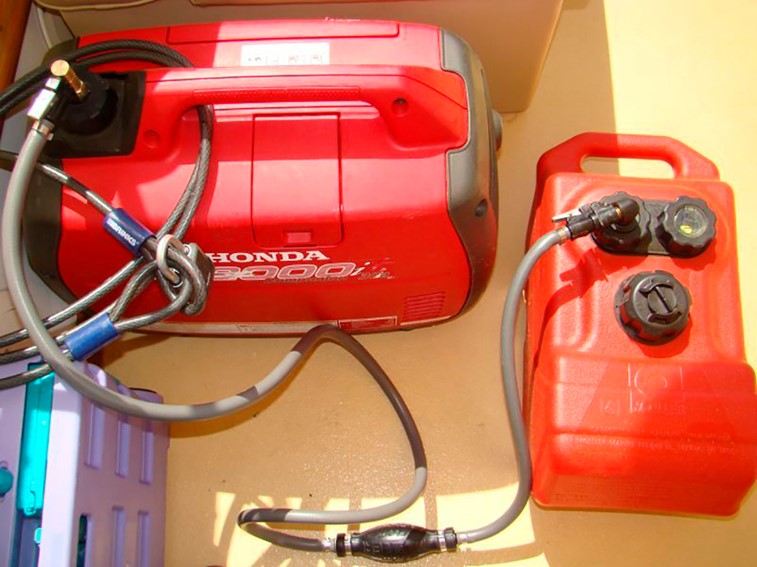
For normal operation of devices connected to the generator, the frequency of the voltage generated by it must always remain unchanged (50 Hz in Europe). The most obvious way to achieve this is to make the motor shaft rotate at the same speed in every situation. The operation of a standard generator is based on this principle, the control system of which, with each change in the electrical load, regulates the fuel supply to the engine so that the speed remains constant. As a result, the engine shaft rotates at the same speed both when the generator is delivering full power and when it is operating at minimum load.
But an underloaded engine makes unnecessary noise, pollutes the environment and burns several times more fuel per 1 kWh of electricity. Therefore, most of the time a standard generator should operate between 40 and 70% of rated power and never at less than 25% of rated load.
At a small load to generate 1 kWh of electricity, a standard generator consumes several times more fuel.
Since the control system of a portable generator does not react instantly to rapid load changes, but with a slight delay, at the moments when consumers are connected and disconnected, the frequency and voltage of the generator deviate from the nominal values and “float”. For inexpensive installations, such deviations reach 10-15%.
Devices with electric motors, when started directly, in the first seconds consume a current that is 5-9 times higher than the rated current. A sudden surge in current has little effect on a fixed network, but can be very sensitive for a portable gasoline generator. First his tension will drop. Then, due to the additional mechanical load, the engine speed will decrease, the voltage frequency will change and, finally, its value will decrease even more.
If after this the generator does not turn off due to overload, then a malfunction may occur in the operation of equipment already powered by it. In this case, the newly connected device will most likely not reach the nominal mode or will also turn off.
To eliminate such situations, when choosing a portable generator, it is necessary to take into account not only the continuous, but also the starting current of consumers. This results in the generator power being approximately 2 times higher than the operating load. As a result, many standard generators remain underloaded most of the time and operate at 30-40% of rated load. In this mode, the specific fuel consumption (the amount of fuel used to generate 1 kWh of electricity) is many times higher than at full load. In addition, along with power, the dimensions and weight of the generating set increase.
Pros
Standard generators are only partially portable. The smallest ones are actually very easy to carry, but most have wheels and a handle for easier transport. Such models weigh 45 kg or more, so it is better to lift, move or load them into a car with two people.
What is attractive about marine gasoline generators is their low cost.
The most common fuel for portable generators is gasoline, which can be purchased in almost any port. But if a gasoline generator is used only in emergency situations, and thus sits idle for several months, it may develop problems, which we discuss below.
Cons
Gasoline remaining in the carburetor slowly evaporates over time and leaves sticky deposits. They block the flow of fuel and make it difficult or impossible to start the engine. Therefore, before turning off the generator, the fuel tank must be shut off so that the engine can run on the fuel remaining in the carburetor.
Gradually, gasoline oxidizes, “goes old” and loses its flammability. It also absorbs water, which then causes corrosion of the tank and other metal parts of the fuel system. To avoid this, a rarely used generator must be started regularly and special additives added to the fuel.
Some models of portable generators can operate on two types of fuel at once - gasoline and propane (liquefied gas). Propane has an important advantage - it is very stable during long-term storage, does not age and does not clog the carburetor. Its only drawback is its lower calorific value compared to gasoline. Because of this, the power of a propane generator is less than that of a gasoline generator, but it is also a little quieter.
But regardless of the type of fuel, gasoline, propane, or gas generators have a high risk of fire, unlike diesel generators.
Gasoline generators require periodic shutdowns, since they cannot operate continuously for a long time (on average, air-cooled devices operate for 4-6 hours, after which a break is needed).
All of the above disadvantages entail additional costs and difficulties during operation, and also negatively affect the service life of gasoline generators.
Diesel Generators
The operating principle of diesel electric generators differs from the operating principle of gasoline generators. The fuel here is ignited not by a spark, but by creating the required pressure in the high-pressure fuel pump (HPF). The process is more complex and the torque is transmitted jerkily. In this regard, professional diesel power plants, including marine ones, are always equipped with additional stabilization systems so that the output voltage does not jump.
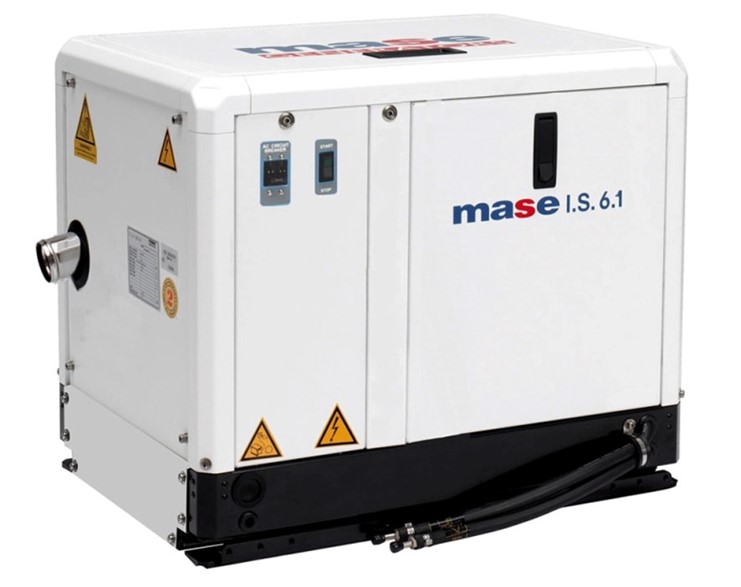
Diesel generators are more powerful, so they are used as an emergency or main source of power supply. Depending on the modification, such a power plant is capable of providing electricity to almost all of the yacht’s electrical equipment, including the most power-hungry air conditioning system, which is something that no considered powerful gasoline generator can handle.
If the power of gasoline generators varies mainly between 0.5-10 kW, then the power of diesel generators lies in a much wider range - from 2 to 200 kW or more. Among them there are both models designed for occasional use and stationary units designed for continuous operation.
When operating a diesel generator, it is important to know that running at low loads or idling is harmful to diesel engines. Thus, in the operating instructions there may be a requirement not to work at idle speed for more than 5 minutes, and to work with a load of 20% for no more than 1 hour (the numbers may be different, for example, 40%). This starts the generator at idle speed.
There are recommendations, as a preventive measure, to carry out a 100% load for about 2 hours every 100 hours of operation. Since fuel ignition in a diesel engine occurs due to high temperature at the end of the air compression stroke and fuel supply at the right moment, and at idle the average temperature of the cycle decreases, this leads to disruption of the mixture formation process, combustion in the cylinder and incomplete combustion of fuel. Which, in turn, leads to the formation of persistent deposits in the cylinder, exhaust manifold, coking of the injector, dilution of the oil in the engine crankcase with unburned fuel and disruption of the lubrication system.
These generators run on diesel fuel. The compression ratio of diesel engines is significantly higher - 18-22 units instead of 9-10 for gasoline engines. A diesel engine has better control of the mixture composition. The same volume of air is supplied to the cylinders, regardless of the crankshaft speed, and the volume of fuel increases with load. As a result of all this, the fuel combustion efficiency and efficiency of diesel generators are higher than those of gasoline generators.
It is believed that on average the efficiency of a gasoline engine is 20% lower than that of a diesel engine at rated power. In other modes, the gap can reach 40%. This means that the characteristics of a diesel generator to obtain the same amount of generated electricity allow you to spend 1.2-1.5 times less diesel fuel than gasoline if this energy were produced by a gasoline generator.
In addition, diesel fuel is consumed much more economically, if only due to the fact that the diesel generator itself is used regularly, and not from time to time, and there is no problem of unused fuel.
There is currently no point in comparing the cost of gasoline and diesel; they are almost equal in price, although gasoline is still more expensive.
Pros
The advantages of a diesel generator over a gasoline generator are explained by the difference in operating principle and design, which ensures:
- less fuel consumption for the same amount of energy produced;
- saving money and time on its maintenance and fuel replacement;
- longer service life;
- reliability and safety of the installation during operation;
- the ability to integrate modern models into the yacht's electrical system with remote control and monitoring.
Cons
The cost of diesel generators is higher than gasoline ones.
More powerful diesel generators also have larger dimensions, including weight, so it may be difficult to install them on small yachts. Because of this, participants in regattas may abandon them in favor of gasoline ones.
In addition, models that are not equipped with special protection can be quite noisy, with significant vibrations.
Which Generator to Choose: Gasoline or Diesel
When choosing the type of alternator for your yacht, focus primarily on the needs of its equipment. Before purchasing the best marine generator, first carefully calculate the power of all energy sources and the consumption of all consumers.
Consider the size and type of yacht - because you will have to allocate space for fairly large equipment.
Focus on the prevailing navigation regions, the availability of shore power and fuel supplies in them.
Be sure to evaluate your level of technical training in case of possible problems on the high seas, as well as the availability of technical service in the event of force majeure in the regions of navigation.
When selecting a power plant, you must be guided by the following technical characteristics of the unit:
- maximum performance;
- efficiency;
- noise level;
- operating conditions.
If you need a high-performance power plant, choose a diesel one, since running high-power gasoline units is impractical and quite expensive.
In terms of efficiency, it is impossible to unambiguously single out any one type of power plant, since everything depends on the model and operating features. For example, when operating at low speeds, inverter gasoline engines significantly reduce fuel consumption. If you compare conventional diesel and gasoline models, diesel generators will be more economical.
Below are some technical characteristics of diesel and gasoline generators for comparison.
|
Summary table of the main differences between diesel and gasoline generators |
||
|
Comparison options |
Diesel generator |
Gasoline generator |
|
Fuel |
Diesel fuel |
Petrol |
|
Power |
2-200 or more kW |
0.5-10 kW |
|
Operating mode |
As a backup and constant source of energy |
Mainly as a backup source |
|
Resource |
3000-7000 (up to 40000) operating hours |
500-4000 hours |
|
Economical |
Fuel consumption is 1.2-1.5 times less than gasoline |
Relatively high gasoline consumption |
|
Repair and maintenance |
Relatively complex and expensive |
Easy to maintain and repair |
|
Noise level |
55-72 dB |
72-110 dB |
|
Weight |
Relatively large |
Small |
|
Price |
1.5-2 times more expensive than gasoline |
Relatively low |
topRik experts, guided, as always, by their own experience of long-term autonomous sailing on a motor and under sails, recommend having both options on board if you are making long passages and the dimensions of the boat allow this. Better yet, use an inverter instead of a gasoline generator, although we agree that this is much more expensive.
The inverter, like a portable generator, also provides consumers with alternating voltage. But, unlike a generator, an inverter does not generate electrical energy, but converts it. The source of electricity for the inverter is the battery. However, this is a completely different story, and over time we will tell you that, as well as introduce you to a way to turn a boat engine generator into a modern multi-stage charger that will successfully replace a portable gasoline generator.
FAQ
Which type of generator is best for a small yacht?
No matter how small your yacht is, it has navigation equipment, marine lighting, some household appliances for cooking and storing food. Therefore, a diesel generator is a more reliable choice for a yacht of any size. Another thing is that you can limit yourself to a device of lower power.
Although, if your choice is coastal cruises, and you have constant access to a shore power source to charge batteries, and the yacht is equipped with additional energy sources - solar panels or a wind generator, then it is quite possible that you can limit yourself to a gasoline generator.
What are the advantages of a diesel generator over a gasoline generator on long voyages?
Reliability, safety and stability of diesel generators are one of the main characteristics why sailors prefer this equipment during long voyages. Let's add here high power, which provides energy to almost all the electrical equipment of the boat. And don’t forget efficient fuel consumption.
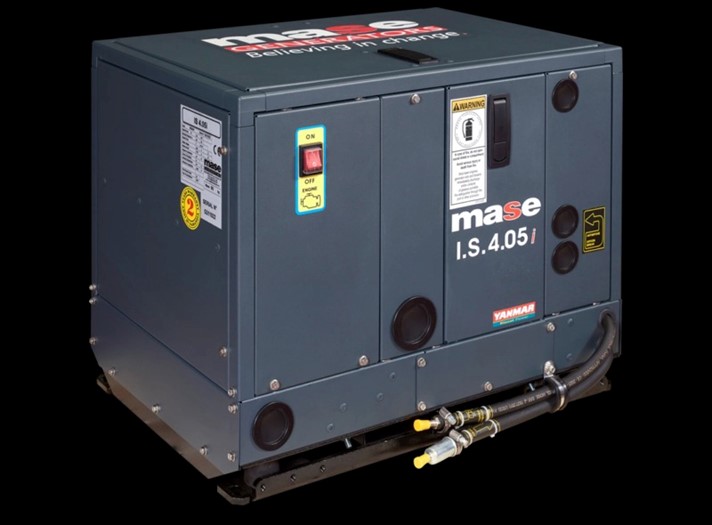
Which type of generator is easier to install and maintain?
A gasoline generator is much easier to install and maintain, which is why many sailors on powerboats and small boats prefer these models - we understand and support them.
What is more economical: a gasoline or diesel generator?
If we count by fuel consumption, then the prize goes to, of course, the diesel generator. But in fact, this should be a comprehensive calculation for each specific model, which may differ in power and other parameters, as well as the amount of electrical equipment that needs to be supplied with power.
Which type of generator is less noisy?
Gasoline generators are quieter than diesel ones because they have a different operating principle and are more powerful. But modern manufacturers offer models with protective covers and other tricks to reduce noise and vibration. Take a look at the marketplace section with diesel generators - they are available there.
Which generator is best to use in cold climates?
Diesel fuel is sensitive to temperature changes. The solution is to select the right fuel:
- summer is used at temperatures not lower than –5 °C;
- winter up to −20°C;
- arctic to −50 °C.
Is it possible to use a gasoline generator on a yacht that already has a diesel engine?
Of course, you can. And the experts at topRik vigorously welcome this option, especially for those embarking on an autonomous transatlantic crossing.
How to choose generator power level for my yacht?
Calculate the consumption of all electrical equipment that you are going to power from this generator and proceed from this result with an unlimited allowance in case of connecting additional devices.



